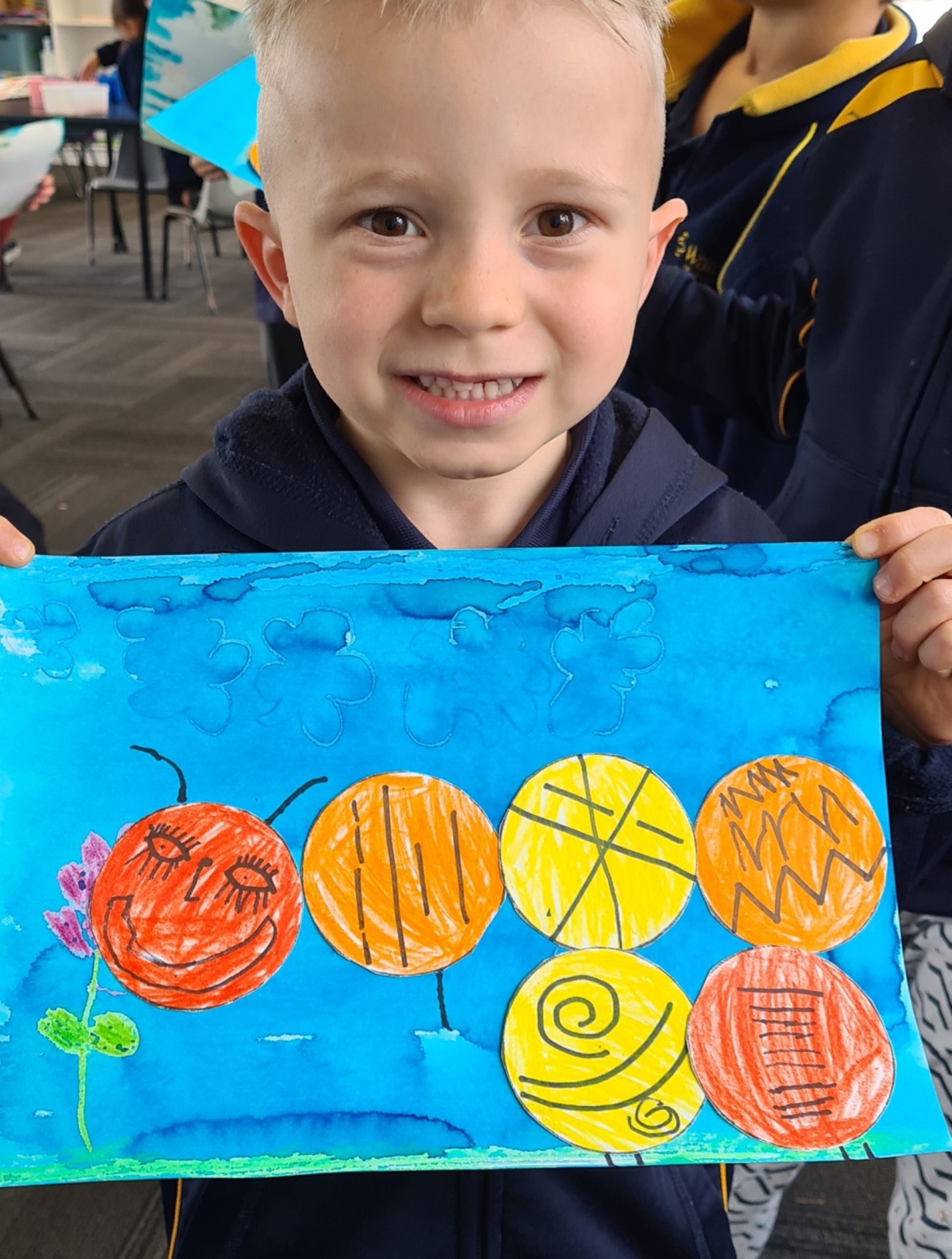Watermelon-eating animals, caterpillars transforming into butterflies, and shimmering rainbow fish, these are the kinds of works of art Rooms 12, 15, and 16 have been making.
Three diverse works of art depicting motion. The elements of art that we concentrated on were lines and colour, texture, and shape. For these rotations, the students were divided into mixed class groups.
Students in the rotation on lines and colour experimented with warm and cool colours in their art displays. Warm colours were used for the caterpillars and cool colours were chosen for the background. The texture rotation focused on the rainbow fish story and created several texture elements to tie everything together. This involved creating a textured background with wet tissue, utilising cloth material as seaweed, and colouring in their fish picture with a blend of crayons and pastels.
Mrs Parkes - The children enjoyed learning about the types of lines used in artwork. The lines we learnt were vertical, horizontal, diagonal, curves and angles. We also learnt about warm colours and cool colours. We used all these elements of art to create a caterpillar collage.
Mrs Griffin - we used the rainbow fish book to inspire us to create a piece of artwork showing the fish moving through the water. The students needed to do two different pieces of art, which would be combined together for the finished artwork. The fish was created using crayons and silver textured card for the sparkling scale. The students found this step easy and fun. The second piece of art was a textured sea scene background. The students needed to create texture by using pva glue, tissue paper and water. This process was challenging for some students. The end result was a visually contrasting piece of artwork showing texture and movement.
Sophie - My caterpillar is like that because it is turning into a chrysalis.
McKenzie - I liked colouring in my caterpillar with warm colours.
Hazel - I enjoyed drawing the caterpillars faces with lines.

Bonnie - I liked the colours blue, green and purple. I liked how the paper felt.
Indi - I liked putting the one silver scale on my fish. It was sparkly.
Simron - I liked adding the purple colour to my picture.



Shape was the focus of the artwork I chose to utilise. Students were able to experiment with and learn about shapes in a variety of ways. To begin, we read a book about a shape box that had various images that were generated by combining many distinct shapes to make an overall picture.
Students brainstormed ideas and experimented with different methods to use geometric shapes to create an overall image, both individually and or collaboratively. Some students struggled with this since they wanted conventional shapes to symbolise their picture. For example, students wanted a large circle but all the shapes available were little circles. Students were able to solve problems and use different geometric shapes as primary pieces in this activity.
Theo - I liked to think of ideas to make. I made three turtles.
Maddox - I made an animal slug shape.
Axel - I was using shapes to make my giraffe. It was fun.
Phin - My fish was eating a bird. The fish jumped up and ate the bird while it swooped down.
Many students in the first group from Rooms 12, 15, and 16 came up with some fantastic and innovative concepts, one of which was a ‘fish eating a watermelon.’ The focus was on animals and their movements. Other students used this as an opportunity to highlight their animal's growth, with their first animal being a baby, then a child, and finally an adult form of their animal.
Before we moved on to the final result, I highlighted with students the need for completing an initial draft.
It will show the movement in how we learn shouted out James.
He went on to say that the class could put the pictures of their art together to demonstrate the beginning, middle, and end, as well as how they improved their ability to choose better shapes.
Shape rotation procedure





The animal shapes that students created were all interesting and unique, with no two works of art alike despite some being the same animal. Students self managed and were able to use geometric shapes to produce their ideas.
Keywords: art rotations, visual art, warm and cool colours, texture, lines, shapes


Comments are disabled for this post.